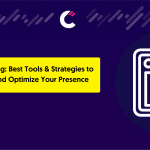
Social media competitive analysis involves regularly monitoring and analyzing your competitors’ activities on platforms like LinkedIn, Facebook, Instagram, and TikTok. The goal is to improve your own marketing strategies by understanding what works best for your competitors and identifying opportunities to enhance your brand’s presence.
To make this process more efficient, using a social media monitoring tool is essential. These tools can automatically track competitors’ performance, making it easier to gather data and insights.
Tracking competitors’ social media pages provides valuable information that can drive your brand forward. It reveals how competitors represent their brand, engage with audiences, and perform across various platforms. You’ll gain insights into what types of content resonate with audiences, which strategies are successful, and which tactics fall short.
Moreover, social media monitoring tools enable you to identify key influencers and brand advocates that actively drive engagement. Observing interactions with competitors’ audiences also presents opportunities for you to attract new customers by addressing unmet needs, resolving pain points, or improving on their strategies.
To conduct a comprehensive competitive analysis, focus on the following key aspects:
Tracking social media pages delivers a range of benefits that enhance your brand’s strategic approach and provide a competitive edge. Here’s how tracking competitors’ social media pages can benefit your marketing strategy:
Evaluate Competitors’ Market Position: Tracking competitors’ social media pages helps you understand their standing in the industry. By analyzing metrics like follower growth, engagement rates, and reach, you can assess how well they are performing compared to your brand.
Identify Key Influencers: When you track social media pages, you can spot influential figures who support your competitors or industry. This insight allows you to connect with potential collaborators who can help expand your brand’s visibility and credibility.
Measure Competitor Success: Analyzing competitors’ tracked pages enables you to measure their success across various platforms. Evaluate their engagement rates, top-performing content, and overall social media achievements, providing insights into effective strategies that you can adapt.
Discover Opportunity Gaps: By tracking social media pages, you can identify where competitors are lagging—whether it’s low engagement on specific platforms, inconsistent posting, or content gaps. Use this information to develop targeted strategies that exploit these weaknesses.
Generate Leads from Unhappy Customers: Monitoring competitor pages also reveals customer dissatisfaction. Engaging with these customers directly or addressing similar pain points in your own campaigns can help you convert them into leads.
Stay Updated on Industry Trends: Tracking social media pages allows you to stay informed about industry trends, conversations, and new developments. This keeps your strategy aligned with current market shifts and ensures your brand remains relevant.
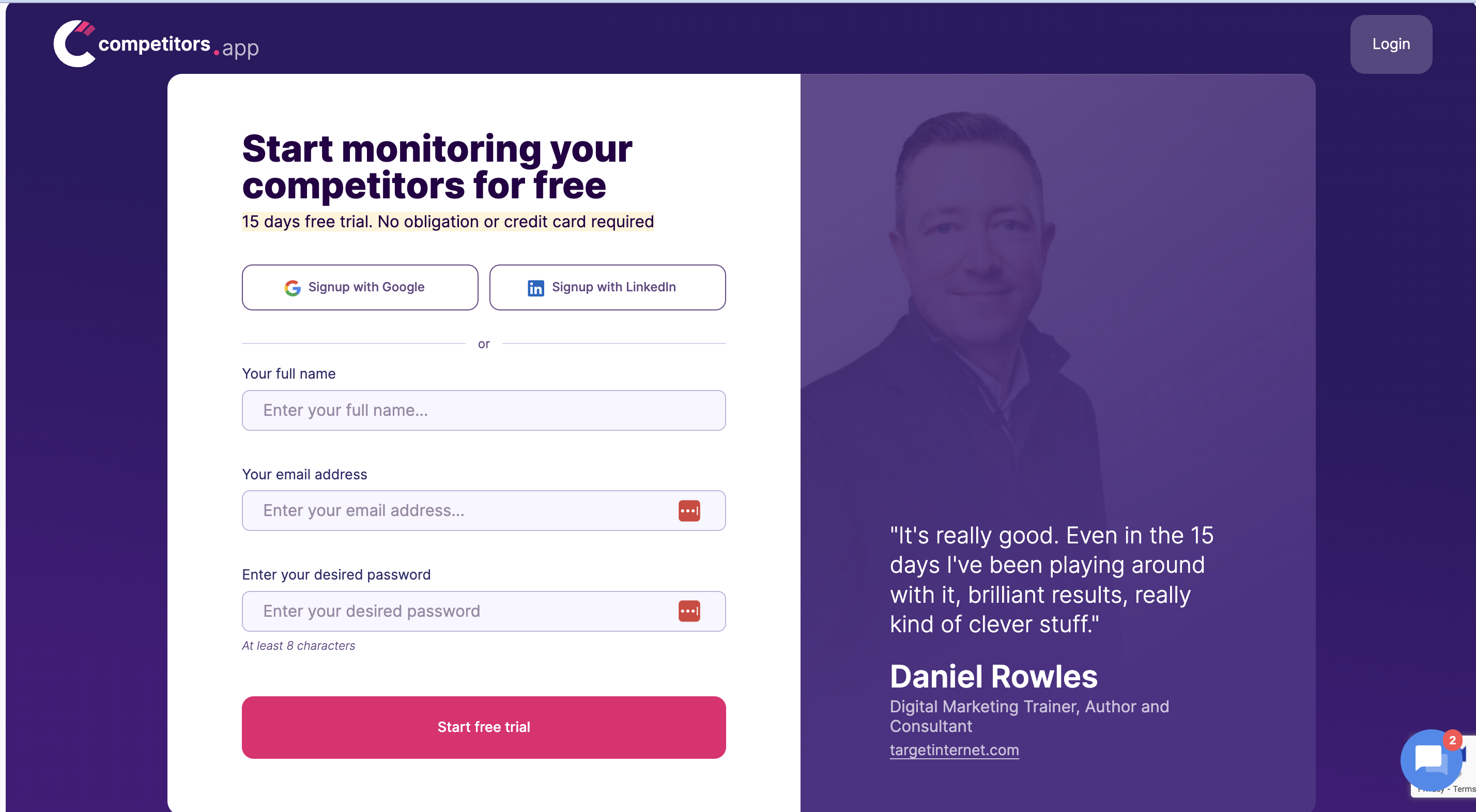
First, create an account on Competitors.app. You'll need to provide some basic information about your business and your competitors. The setup process is straightforward and user-friendly.
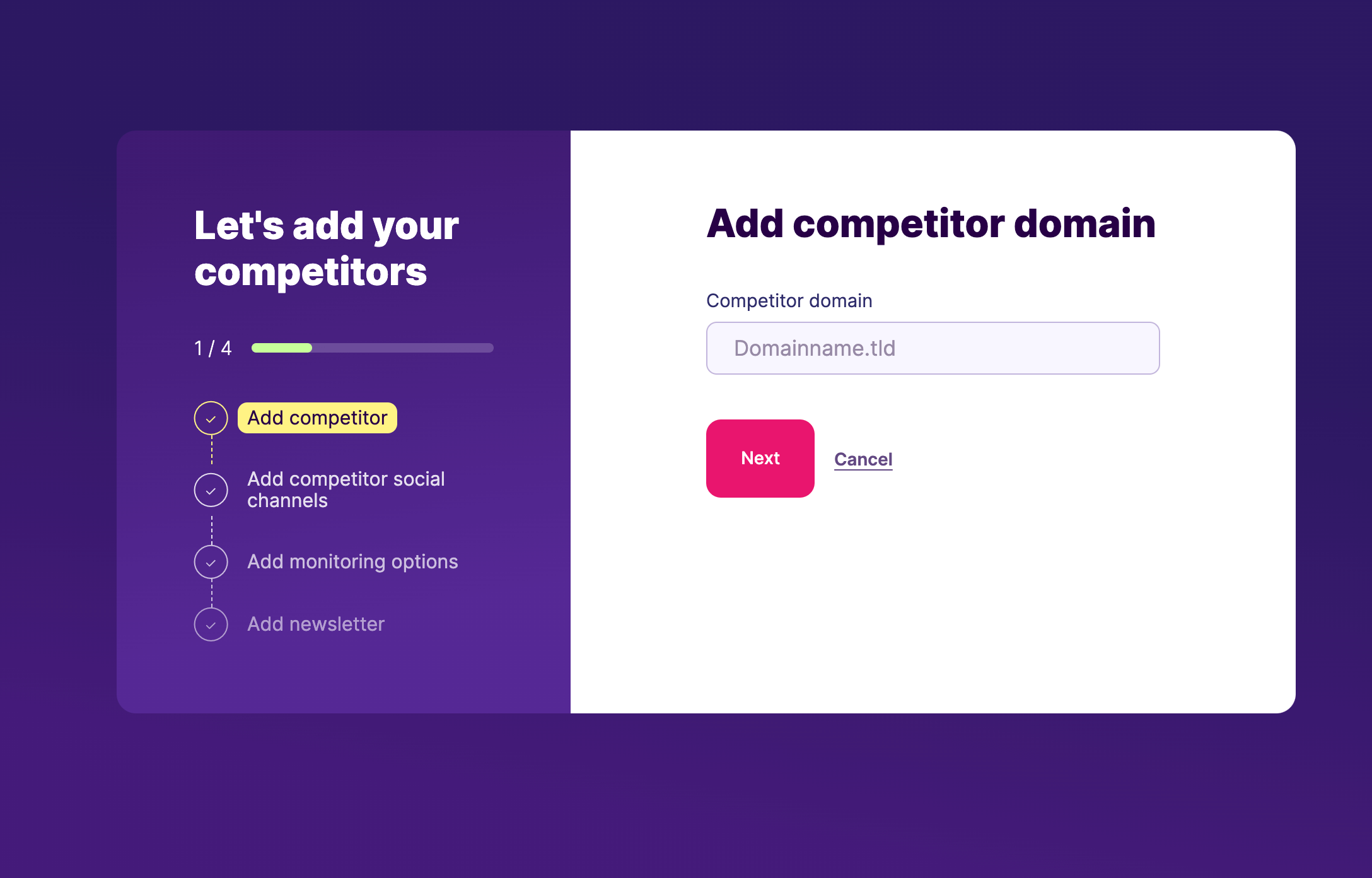
Once your account is set up, add the competitors you want to analyze. You can usually do this by entering their website URLs. Competitors.app allows you to track multiple competitors, giving you a comprehensive view of your competitive landscape.
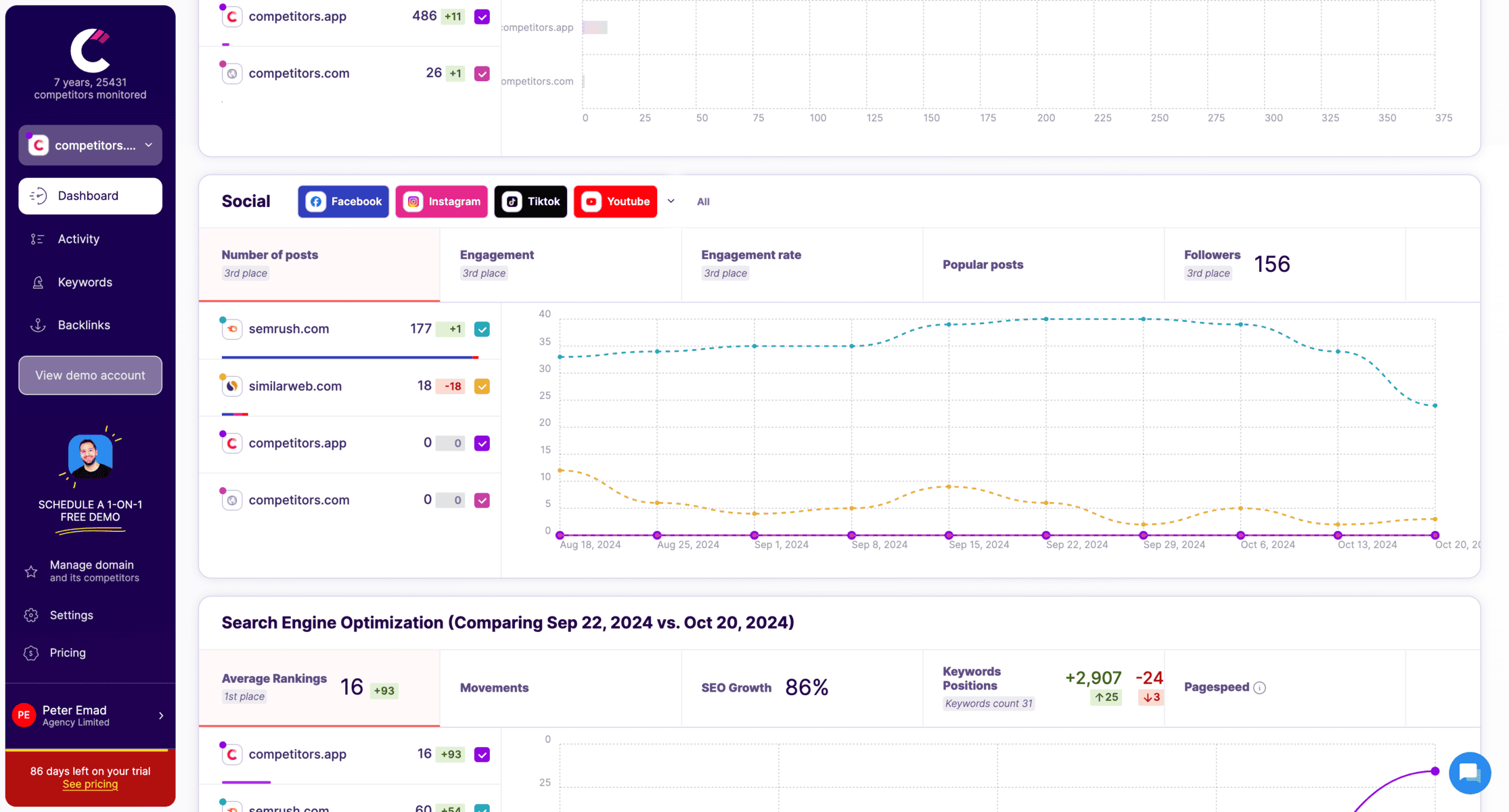
Scroll to the bottom of the dashboard till the "social" section. In this section, you'll find the numbers of posts your competitors posted, their top posts, their new followers count and their engagement rate.
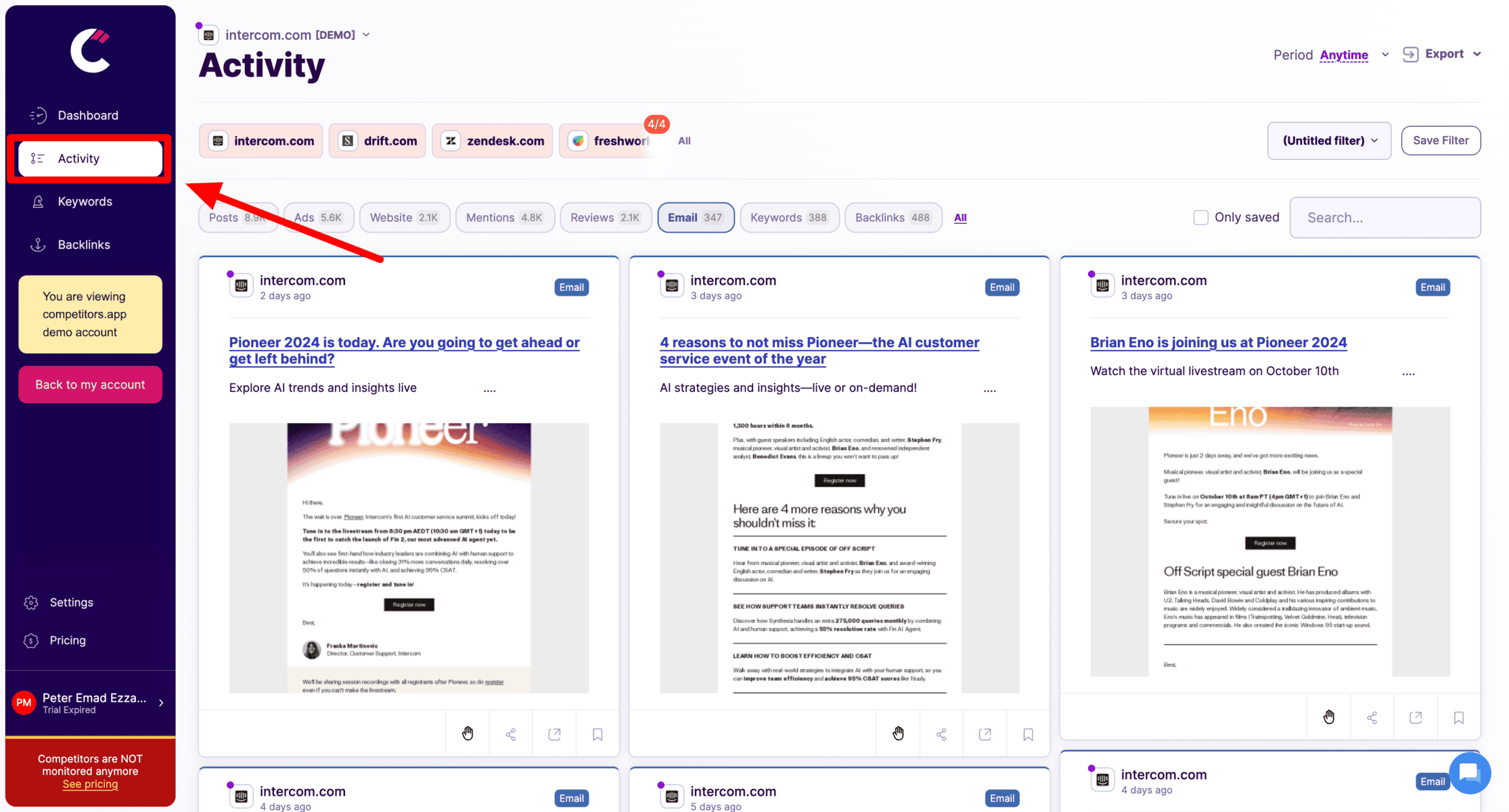
From the left sidebar, click on the "activity" section. This will take you to a page that shows all the data about your competitors, from paid ads, website changes, email marketing activities, social media activities to even their SEO performance.
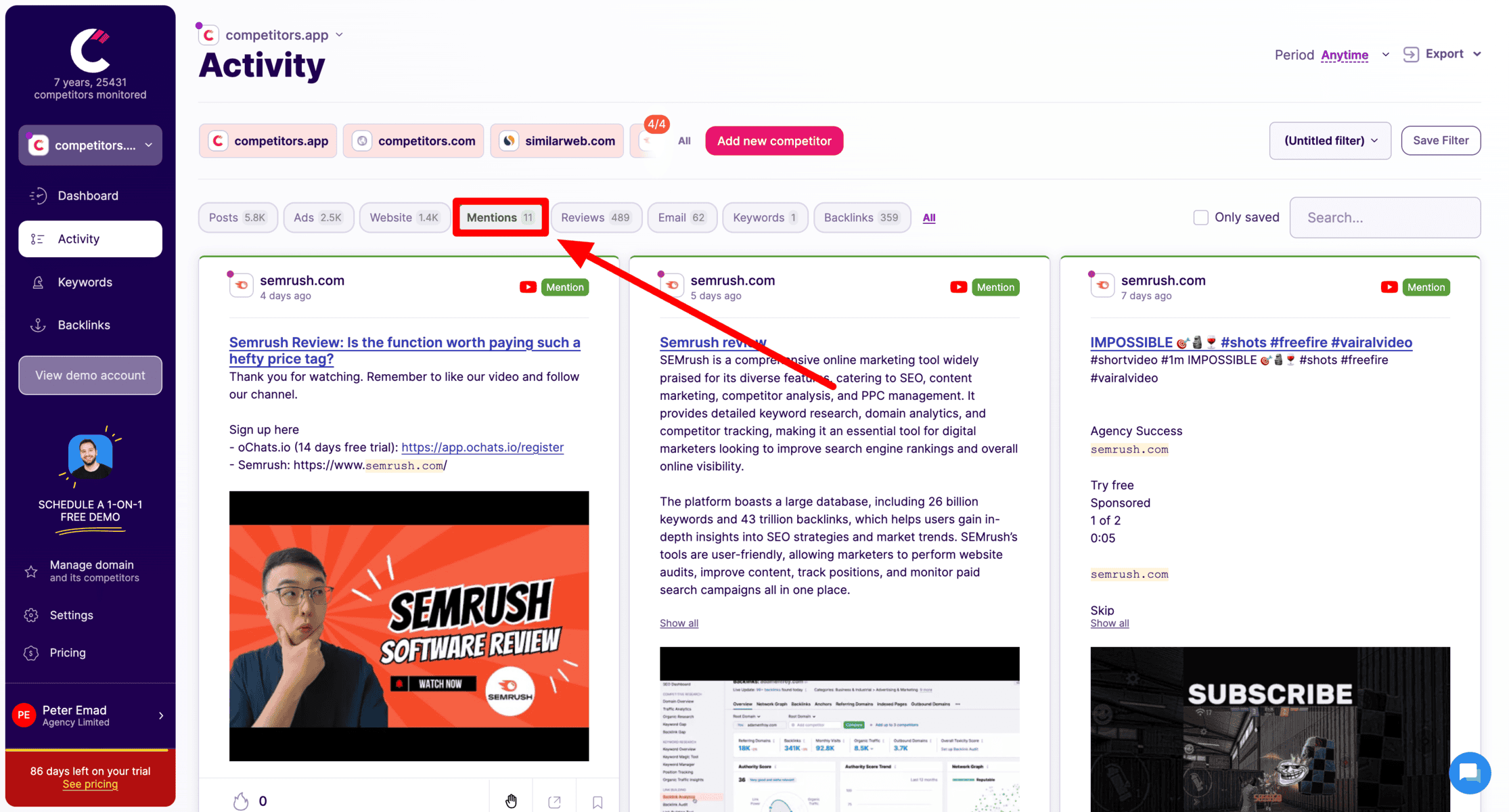
To get a more in-depth analysis, select "posts". This will show you all the posts your competitors have posted over a specific period of time.
This will show you the amount of engagement on each post in detail.
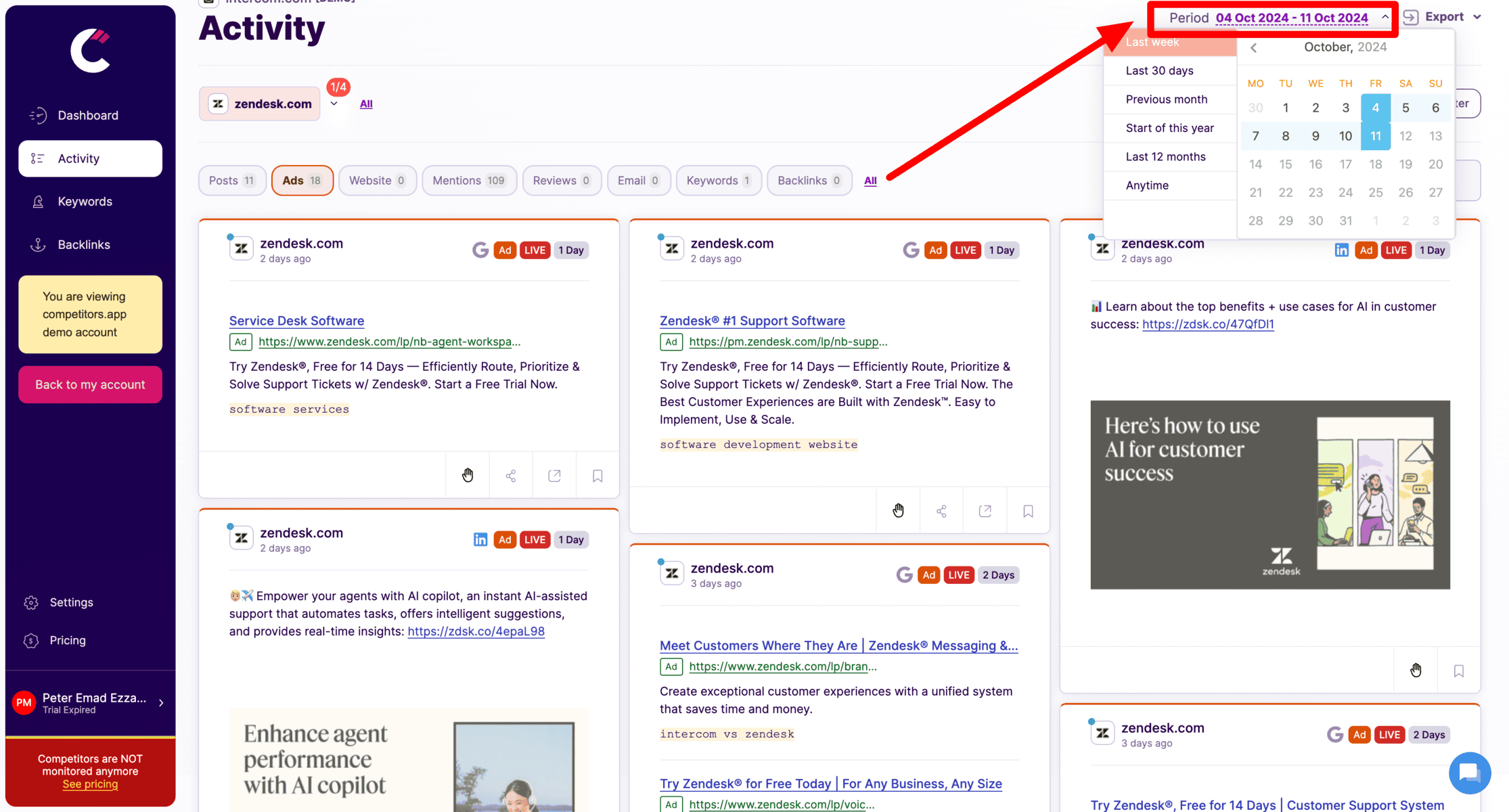
You can also filter by specific date range, such as a specific week, month or even a day. This feature allows you to see yours or your competitors' posts and social media activity over a specific period of time.
Tracking social media pages is essential for gathering key insights that can enhance your own strategy. Here’s how to effectively track competitors’ social media pages and leverage the insights for growth:
Identify Which Networks Competitors Use
Analyze How Competitors Position Themselves
Track Trending Topics and Content
Monitor Audience Reactions to Competitors
Join Relevant Groups Competitors Participate In
Even with the best tools and strategies, there are some common pitfalls that can limit the effectiveness of tracking social media pages. Here are the most frequent mistakes and how to avoid them:
Focusing Only on Vanity Metrics
Ignoring Sentiment Analysis
Overlooking Consistent Tracking
Failing to Act on Insights
Not Adapting to Platform-Specific Metrics
While engagement rate is one of the most important metrics (as it indicates audience interaction), a combination of metrics—including follower growth, reach, and sentiment—is necessary for a comprehensive analysis.
For optimal results, aim to track competitors at least weekly. However, for fast-paced platforms like Instagram or Twitter, daily tracking might be more effective to capture real-time trends.
Some of the popular tools include Competitors App, Hootsuite, Sprout Social, and BuzzSumo. Choose a tool based on your budget, features needed (e.g., sentiment analysis, influencer tracking), and ease of use.
By tracking competitors, you can identify strategies that drive the highest engagement, conversion, or sales, enabling you to optimize your own content and campaigns for better results. This data-driven approach can lead to improved ROI by targeting successful tactics.
No, private groups cannot be directly tracked. However, you can still observe discussions, group affiliations, and engagement patterns in public groups to understand industry-related conversations and competitors’ interactions.
Monitoring typically refers to real-time observation of social mentions, while tracking involves a more comprehensive analysis of competitor performance, trends, and overall social media strategy.
Start by tracking direct competitors with a similar audience and product/service offerings. Expand to include indirect competitors to gain broader insights into industry trends.
Yes, tracking your own pages alongside competitors’ can help you compare performance, identify strengths, and address weaknesses in your strategy.
Monitor competitor website changes
You can get alerted when your competitors are making changes to their website.
Find competitor keywords
Finding your competitors’ keywords is essential for your business. It means that you focus your entire website on targeting high volume, quality keywords.
Track Social Media Pages
Social media competitive analysis is the constant monitoring and analyzing the moves of your competition on social media.
Competitor Email Monitoring
Tracking your competitors’ emails takes some time, but it’s well worth it!
How to do competitor analysis
One important step is to conduct an effective competitive analysis to evaluate your competitors’ brands.
Competitors App SRL
support at competitors.app
Sanzienelor 3, Sibiu, Romania
+1 (302) 208-7954